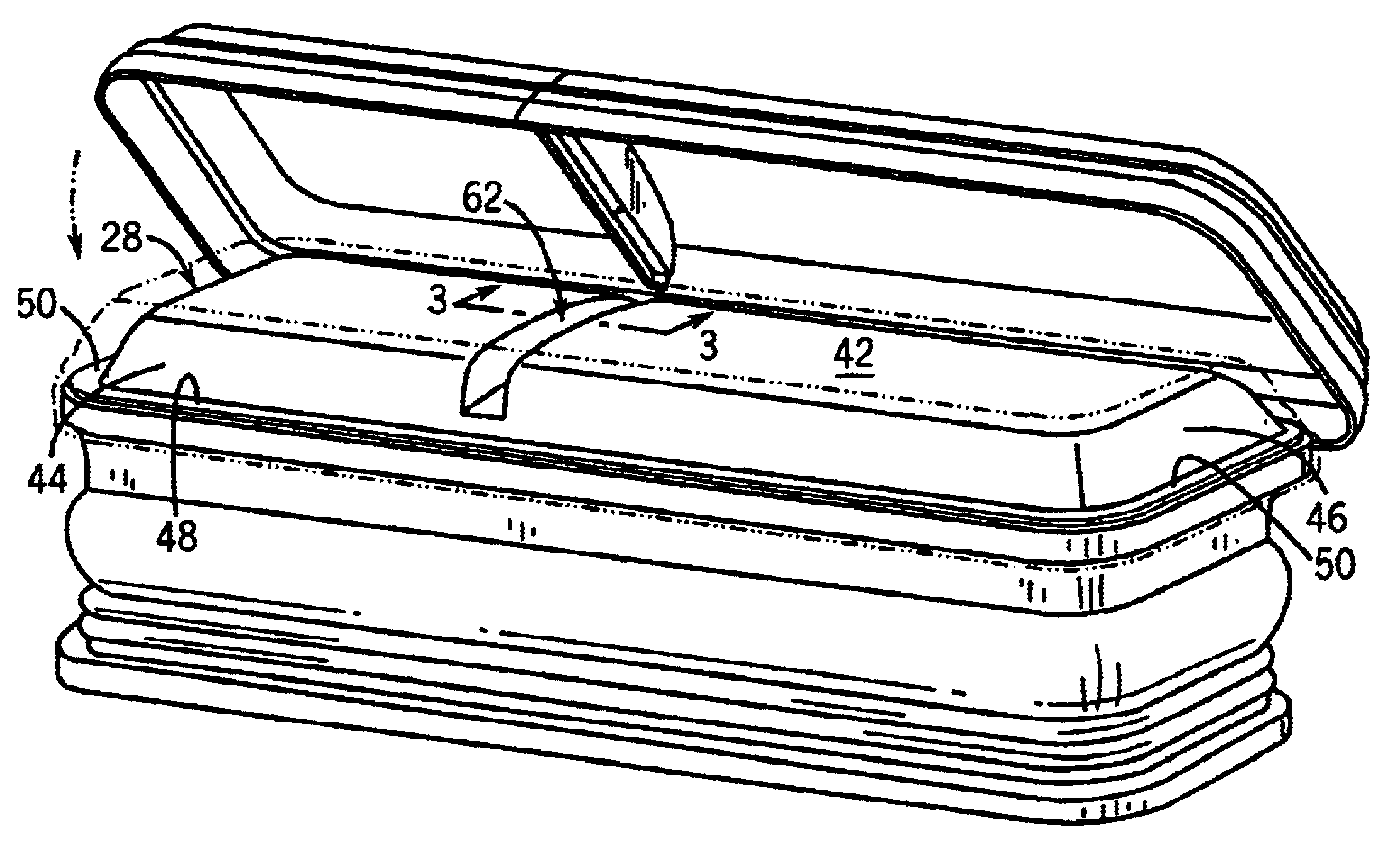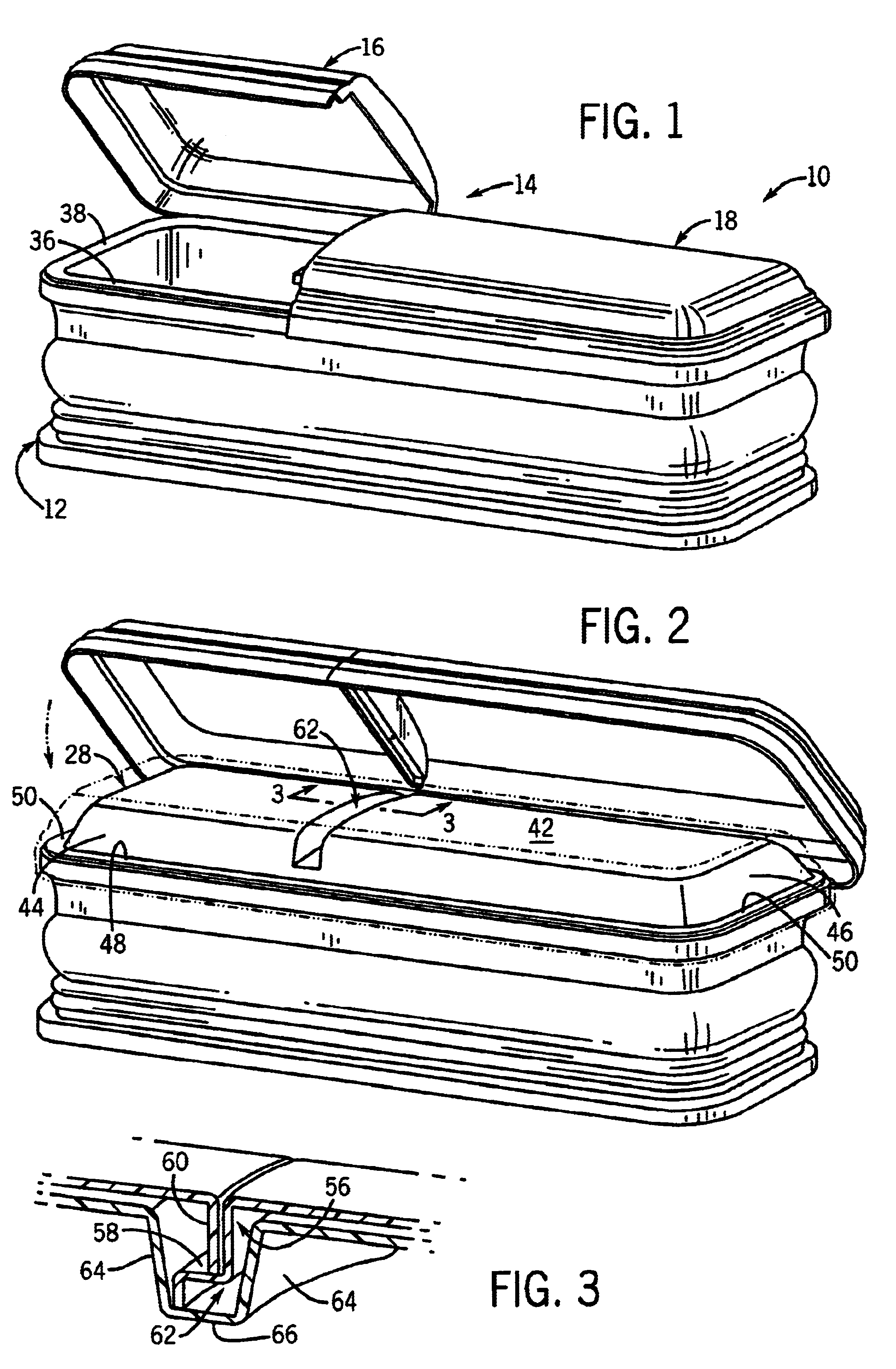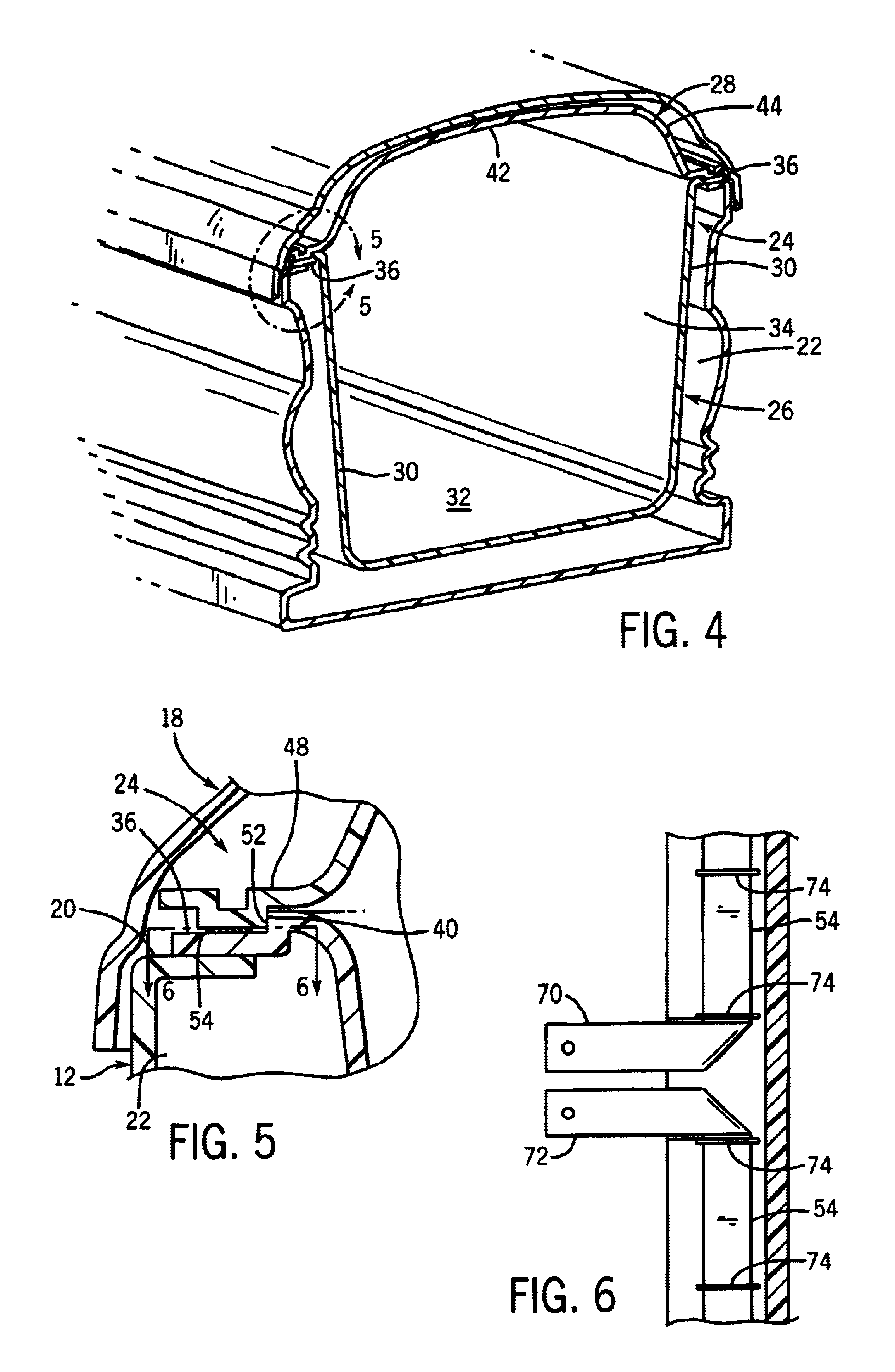Sealed liner system for interment vessels or containers
a liner system and interment vessel technology, applied in the field of sealing the interior can solve the problems of affecting the service life the inability to meet the needs of the interment vessel, and the type of seal inevitably breaks down, so as to prevent the leakage of fluids, prevent the infiltration of fluids, and improve the service life.
- Summary
- Abstract
- Description
- Claims
- Application Information
AI Technical Summary
Benefits of technology
Problems solved by technology
Method used
Image
Examples
Embodiment Construction
[0022]Referring to FIG. 1, an interment vessel or container in the form of a casket 10 generally includes a bottom or lower member 12 which defines a bottom wall and a series of upstanding side walls which cooperate to define an internal recess or cavity adapted to receive the remains of a deceased. Casket 10 further includes a top or upper member 14 which is adapted to overlie and enclose the recess or internal cavity of lower member 12. In the illustrated embodiment, upper member 14 has a split construction, and includes a head section 16 and a foot section 18, each of which is hinged to lower member 12 for providing pivoting movement between open and closed positions. It is understood, however, that upper member 14 may be of a one-piece construction as opposed to the illustrated split construction. It is further understood that upper member 14 may be separate from lower member 12 so as to be engageable with lower member 12 by placing the upper member on the lower member, or that ...
PUM
| Property | Measurement | Unit |
|---|---|---|
| Electrical resistance | aaaaa | aaaaa |
| Electrical conductor | aaaaa | aaaaa |
| Electrical current | aaaaa | aaaaa |
Abstract
Description
Claims
Application Information
 Login to View More
Login to View More - R&D
- Intellectual Property
- Life Sciences
- Materials
- Tech Scout
- Unparalleled Data Quality
- Higher Quality Content
- 60% Fewer Hallucinations
Browse by: Latest US Patents, China's latest patents, Technical Efficacy Thesaurus, Application Domain, Technology Topic, Popular Technical Reports.
© 2025 PatSnap. All rights reserved.Legal|Privacy policy|Modern Slavery Act Transparency Statement|Sitemap|About US| Contact US: help@patsnap.com



